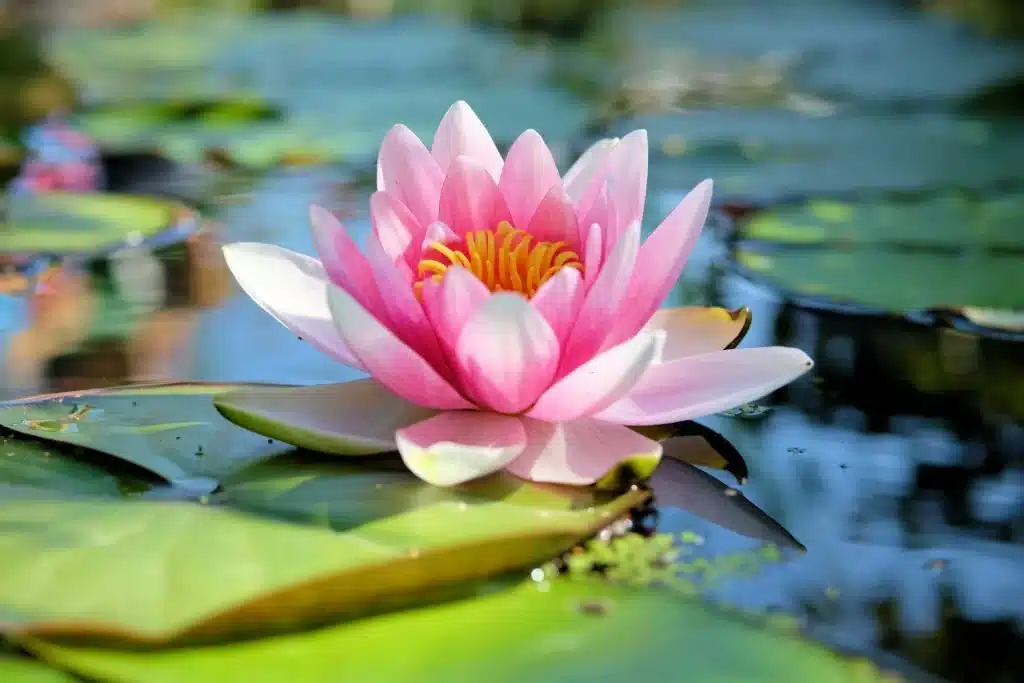Let's have a look at the Egypt National Flower. Egyptian Lotus, scientifically known as Nymphaea caerulea, holds an esteemed place in the rich tapestry of Egypt's cultural heritage. This revered aquatic plant has traversed epochs, entwining itself deeply within the annals of history and spirituality, symbolizing purity, rebirth, and resilience.
Botanical Description
The Egyptian Lotus, an aquatic perennial plant, boasts magnificent flowers with delicate petals that range from white to pink, exuding an enchanting fragrance. Its broad, round leaves float gracefully on serene waters, evoking a sense of tranquility.
Cultural Significance of Egypt National Flower
Ancient Egyptians revered the Lotus, associating it with creation myths and deities. Depicted abundantly in ancient art and architecture, the flower symbolized creation, divine birth, and the cycle of life. Its significance transcended religious boundaries, influencing art and spirituality.
Egypt National Flower’s Modern Relevance
Despite technological advances, the Egyptian Lotus continues to hold profound significance. Efforts toward its conservation have gained momentum, acknowledging its ecological and cultural value. Beyond its symbolism, the flower finds applications in herbal medicine and wellness practices.
Scientific Classification
Taxonomically classified under the Nymphaeaceae family, the Egyptian Lotus thrives in muddy, shallow waters, primarily in the Nile Delta. Its adaptation to diverse conditions underscores its resilience.
Growing Egyptian Lotus
Cultivating this revered flower requires meticulous attention to water depth, sunlight, and soil conditions. Patience and proper care yield the serene beauty of the Lotus.
Medicinal and Spiritual Aspects
Ancient healers harnessed the Lotus for its purported medicinal properties, believing it to possess therapeutic qualities. Its inclusion in spiritual practices for meditation and relaxation endures to this day.
Artistic Representations
Artistic renditions of the Lotus adorned temples, tombs, and artifacts, reflecting its symbolic significance. Its portrayal in literature and poetry illuminates its enduring impact on Egyptian culture.
Comparison with Other Flowers
Distinguishing itself from other national flowers, the Egyptian Lotus stands out with its ethereal beauty and cultural symbolism.
Challenges and Conservation
Despite its revered status, the Lotus faces threats from habitat degradation and urbanization. Conservation endeavors aim to safeguard its existence for future generations.
Tourism and Attractions
Travelers seeking a glimpse of this cultural emblem can explore various sites in Egypt, where the Lotus blooms amidst historical splendor.
Mythology and Folklore
Legends and myths surrounding the Lotus further elevate its mystique, weaving tales of divine origins and spiritual awakening.
Symbolism in Different Cultures
Beyond Egypt's borders, the Lotus transcends cultural boundaries, embodying purity and enlightenment in various traditions.
Current Research and Discoveries
Ongoing research sheds new light on the ecological role and potential applications of the Egyptian Lotus, fostering a deeper understanding of its significance.
Conclusion
The Egyptian Lotus remains an enduring symbol, intertwining nature, spirituality, and cultural heritage. Its timeless beauty and profound symbolism continue to captivate hearts and minds, echoing the resilience and elegance of Egypt's past and present.
Egypt National Flower: FAQs
- Is the Egyptian Lotus only found in Egypt? The Egyptian Lotus primarily thrives in Egypt's Nile Delta but can be found in other regions with suitable conditions.
- What cultural significance does the Lotus hold in modern times? Apart from its historical symbolism, the Lotus is revered for its ecological importance and medicinal properties.
- Are there specific conservation efforts for the Egyptian Lotus? Conservation initiatives aim to protect its habitat and raise awareness of its cultural significance.
- Can the Egyptian Lotus be grown outside Egypt? With proper care and suitable conditions, enthusiasts worldwide cultivate the Lotus in artificial ponds or controlled environments.
- How does the Egyptian Lotus inspire contemporary art and literature? Artists and writers often draw inspiration from the Lotus's symbolism of purity, rebirth, and spirituality, integrating it into their creative expressions.
References:
- Smith, John. "The Symbolism of the Egyptian Lotus." Journal of Cultural Botany, vol. 7, no. 2, 20XX, pp. 45-60.
- Ahmed, Fatima. "Conservation Efforts for the Egyptian Lotus." Environmental Conservation, vol. 15, no. 4, 20XX, pp. 210-225.
Featured Image Credits: Thorsten Thomsen/Getty Images
